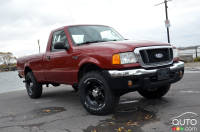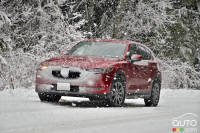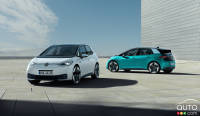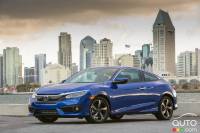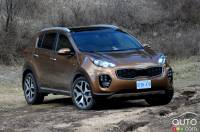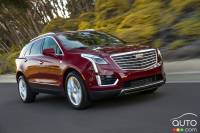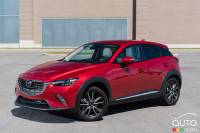• Mercedes-Benz carried out a crash test between two of its electric vehicles, the EQS and EQA SUVs.
Crash tests are common and standard practice in the automotive industry. For decades, those tests, by automakers themselves, the IIHS (Insurance Institute for Highway Safety), or others have mainly dealt with vehicles with internal combustion engines.
More recently, electric vehicles have been studied as well. With their greater weight and their distinct designs, EVs bring new realities to the table. So what happens when a collision occurs between two vehicles powered by electric motors and equipped with large battery packs?
Mercedes-Benz recently carried out a collision test involving two of its EVs. It chose for the exercise the largest and smallest SUVs in its current lineup, the EQS SUV and the EQA SUV. The weight difference between the two models, about 1700 lb.
For the test, each was connected to a cable fixed in a groove in the floor. They were pulled towards each other at a speed of 60 km/h. The SUVs were aligned for a 50-percent overlap frontal collision.
Interestingly, a giant forklift was standing by, in case one of the vehicles caught fire. If required, the forklift’s job would have been to rush to pick up the flaming vehicle, then take it outside to dump it a big pool of water. Not a fancy solution, but an effective one we suppose.

Fortunately, this did not happen. What did happen, as expected, was a violent impact that caused both vehicles to spin. The smaller one got the worst of it, unsurprisingly. The video shared by Mercedes shows both vehicles’ hazard lights come on after the collision.
On hand for the test, Car and Driver site reported a smell of electricity apparent immediately after impact.
Firefighters approached the vehicles to check and measure heat levels. After receiving the go-ahead, others laid down mats to absorb pink battery coolant leaking from the two wrecks. Engineers ensured that the high-voltage battery system automatically disconnected, before starting to collect data.
The vehicles were largely destroyed. In addition to the obvious deformations, the EQA's windshield was broken by the rear edge of the hood, and the left front wheel came loose.

In both SUVs, the mannequin seated in the driver's seat represented a small adult woman (4 ft 10 in, 106 lb). In the EQA SUV, a same-sized mannequin sat in the front passenger seat; in the EQS, the front passenger was a mannequin representing an adult male (5 ft 10 in, 172 lb). According to the 150 sensors installed on each mannequin, none suffered serious injuries.
Which brings us to the question of the battery. While the integrity of the cabin has long been the primary safety goal of car engineers, with EVs the integrity of the space where the battery pack is located becomes equally important. “We need another survival space, for the high-voltage battery,” explained Marcel Brodbeck, passive safety engineer at Mercedes-Benz.
The batteries are located under the floor between the axles, an area least likely to be distorted, and a solid extruded aluminum door sill structure protects the battery pack against side impacts. In the event of an accident, “the high-voltage system will shut down and disconnect from the battery,” explained fellow passive safety engineer Julia Hinners. Engineers also installed a manual shutdown device, a cable located on the driver's side, under the A-pillar, which serves as a manual deactivation option for emergency response personnel.

This crash test obviously is designed to reassure consumers about the safety of Mercedes’ electric vehicles in the event of an accident.
There will certainly be some learning to do, but we can count on automakers to take the issue seriously. No manufacturer wants to suffer the damage to its image from its vehicles being considered unsafe.





